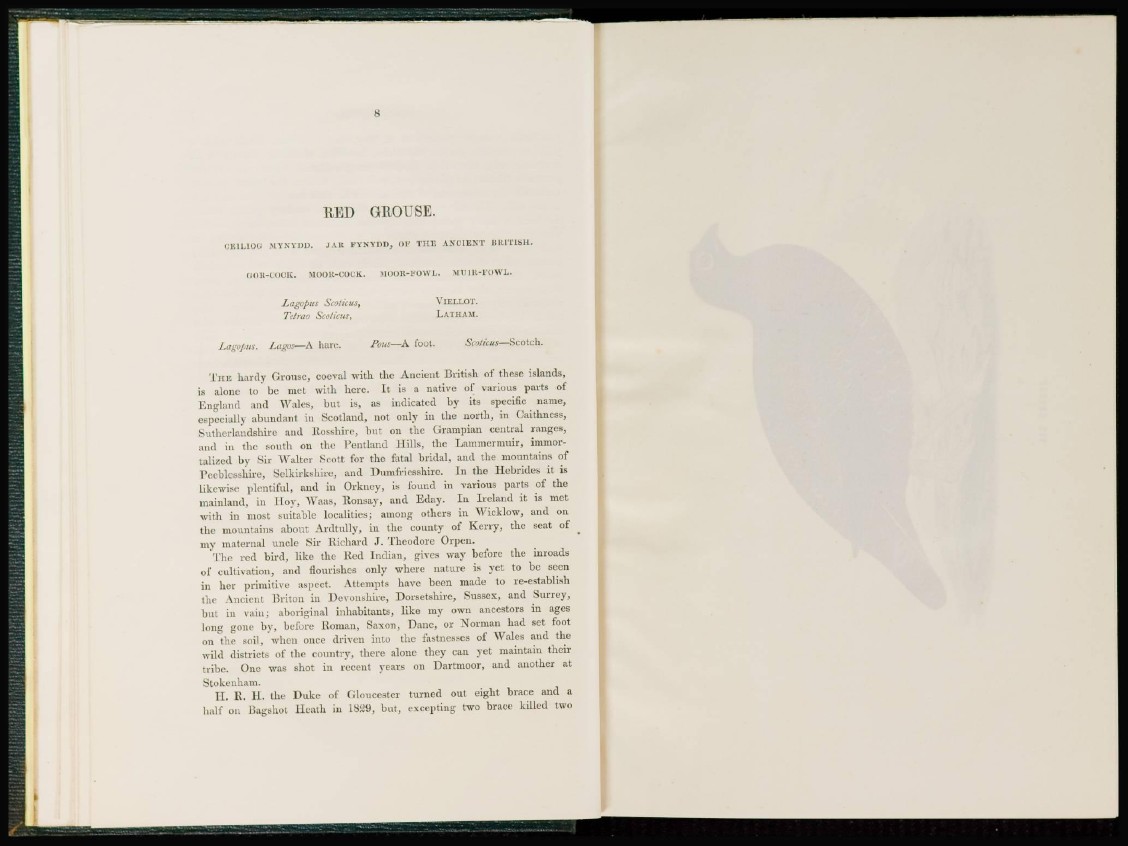
RED GROUSE.
0BILIOG MYNYDD, JAR FYNYIH), OF THE ANCIENT BRITISH.
GOR-COCK. MOOR-COCK. MOOR-FOWL. MUlR-FOWL.
Lagopus Scotkus, VIELLOT.
Tdrao Scolicus, LATHAM.
J.agopus. Lagos—A hare. Pons—A fool. Siv/icus—Scotch.
T H E h a r d y Grouse, coeval w i t h the Ancient B r i t i s h of these islands,
is alone to be met with here. It is a native of various parts of
E n g l a n d and Wales, but is, as indicated by its specific name,
especially abundant in Scotland, not only in the north, in Caithness,
S u t h e r l a n d s h i r e and Rosshire, but on the Grampian central ranges,
a n d in the south on the Pent l a n d Hills, the Lammerniuir, immort
a l i z e d by Sir W a l t e r Scott for the fatal b r i d a l , and the mountains of
P e e b l e s s h i r e , S e l k i r k s h i r e , and Dumfriesshire. In the Hebrides it is
likewise plentiful, and in Orkney, is found in various parts of the
mainland, in Hoy, W a a s , Ronsay, and Eday. In I r e l a n d it is met
w i t h in most suitable localities; among others in Wicklow, and on
t h e mountains about A r d t u l l y , in the county of K e r r y , the seat of
my maternal uncle Sir Richard J. T h e o d o r e Orpen.
The red bird, like the Red I n d i a n , gives way before the inroads
of cultivation, and flourishes only where nature is yet to be seen
in her primitive aspect. Attempts have been made to re-establish
t h e Ancient Briton in Devonshire, Dorsetshire, Sussex, and Surrey,
but in vain; aboriginal i n h a b i t a n t s , like my own ancestors in ages
long gone by, before Roman, Saxon, Dane, or Norman had set foot
on the soil, when once driven into the fastnesses of Wales and the
wild districts of the country, there alone they can yet maintain their
t r i b e . One was shot in recent years on Dartmoor, and another at
Stokenham.
I I . R. H . the D u k e of Gloucester turned out eight brace and a
half on Bagshol H e a t h in 18^9, b u t , excepting two brace killed two